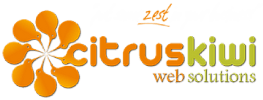How to fix 4 common on page SEO disasters
On page SEO - that's the stuff you do to your actual website, as opposed to off page SEO which is the back linking process, etc - is a pretty simple thing to get right. Yet, I see it done wrong so often and that hurts you and you business. Here are 5 ways to boost your on page SEO - and they're all easy.
The "Title Tag"
 This is what appears in the browser tab of the website, or pops up when you mouse over the tab. This is the most important tag in your on page SEO arsenal. Getting this one wrong can be painful, yet, as I said, I see it wrong so often. This tag should be 60-70 characters long - characters after that will be ignored. I aim for 65 generally. You should also get your most important keywords or phrases at the beginning of the tag - the closer to the end, the less weight the search engines (SE's) put on them.
This is what appears in the browser tab of the website, or pops up when you mouse over the tab. This is the most important tag in your on page SEO arsenal. Getting this one wrong can be painful, yet, as I said, I see it wrong so often. This tag should be 60-70 characters long - characters after that will be ignored. I aim for 65 generally. You should also get your most important keywords or phrases at the beginning of the tag - the closer to the end, the less weight the search engines (SE's) put on them.
This tag should be different for every page of your site. Think of it as banner advertising for the benefit of the search engines. You're telling the SE's, "Hey! This is what this page is about!" Often I see the same title tag for every page - what a waste!
The H1 tag
After the Title tag, this is the next most important tag for your pages. Again, it's like banner advertising, telling the SE's more about your page content. In past years, the idea was to load up yout Title tag, H1, H2 and H3 (and even H4, 5 and 6) tags with the same phrase. Nowadays, that process is out. In fact, doing this is actually counter-productive to your SEO. The SE's have gotten much smarter with synonyms and antonyms. And that's great news for anyone wanting to do SEO - it means we can use a huge range of extra words to say the same thing, just differently.
Alt tags for images
If an image from your website doesn't load (for whatever reason) there should be a box in it's place with some text talking about what the image is. This one is a very common miss when doing on page SEO, and is a waste of good SEO power. The image above has the Alt tag "Title tags for SEO". Again, what we're trying to do is tell the SE's what the page is about - so a good reason for picking your images carefully.
Read more
This is probably the most optimized phrase on the net. Whilst it's telling your user, correctly, that there's more to the article, it's telling the SE's that the page the link is pointing to is all about... you guessed it "Read more"! Now, there are always times where we want, even need, to use a read more. So, when you do, rather than use "Read more", try this... "Read more about Title tags for SEO". See how much more power that read more has for the page it links to?
So, will these fixes rocket you to the top? Probably not, but that depends on how bad the rest of your competition's SEO is. If your competition hasn't done its SEO well, then it could - I've seen it happen. In fact, I'm about to meet with a potential client who gave me 4 competitors. I reviewed their sites and the SEO on all 4 is very poor. In this case, there is a distinct possibility that good SEO on my potential client's new site could very well propel them to the top. Watch this space!

